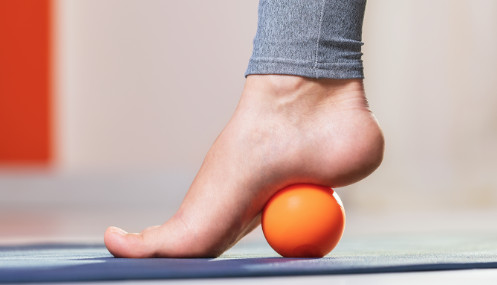Understanding and Managing Plantar Fasciitis: Effective Exercises for Relief
Plantar fasciitis is a widespread condition characterized by inflammation of the plantar fascia, a robust band of connective tissue that extends from the heel to the toes. This condition is notorious for causing debilitating heel pain, making it one of the most common complaints among individuals, particularly those who lead active lifestyles or have occupations that demand prolonged periods of standing. The discomfort often intensifies during the first steps in the morning or after extended periods of inactivity, transforming mundane daily activities into painful challenges. For those grappling with this ailment, incorporating specific exercises into their routine can be instrumental in reducing inflammation, alleviating pain, and fostering healing.

Why Exercises Matter in Treating Plantar Fasciitis
Engaging in targeted exercises can play a crucial role in managing plantar fasciitis. These exercises not only focus on stretching and strengthening the relevant muscles but also help alleviate the stress placed on the plantar fascia. Furthermore, they can enhance flexibility and mobility, both of which are essential for preventing future flare-ups. The importance of understanding the appropriate techniques for these exercises cannot be overstated; incorrect form or overexertion may exacerbate the condition instead of providing relief.

Effective Exercises to Alleviate Pain
Below are several effective exercises designed to target the plantar fascia and associated muscle groups:

1. Towel Stretch
The towel stretch is an excellent method to enhance flexibility and alleviate tension in the foot. To perform this exercise:
- Sit on the floor with your legs extended in front of you.
- Take a towel or a belt and loop it around the ball of the affected foot.
- Gently pull the towel towards you until you feel a stretch in the bottom of your foot and calf.
- Hold the stretch for 15-30 seconds and repeat 2-3 times.
This exercise caters specifically to the plantar fascia and calf muscles, helping to reduce tension and improve overall foot mobility.
2. Calf Stretch
Tightness in the calf muscles can significantly contribute to plantar fasciitis, as it increases pressure on the plantar fascia. Regular calf stretches can help alleviate this strain. Here’s how to do it:
- Stand facing a wall with your hands against it for support.
- Step one foot forward and keep the other foot back, ensuring both heels remain on the ground.
- Bend your front knee while keeping your back leg straight and press your back heel into the ground.
- Hold for 15-30 seconds, then switch legs. Repeat 2-3 times for each leg.
Incorporating this exercise into your routine can help improve the flexibility of your calf muscles, which is critical for reducing the pull on the plantar fascia.
3. Toe Pull
The toe pull focuses on relieving tension directly from the plantar fascia. To perform this exercise:
- Sit in a chair and cross one foot over the other knee.
- With your hand, grasp the toes of the affected foot and gently pull them towards you.
- This action will stretch the bottom of your foot and the plantar fascia.
- Hold the stretch for 15-30 seconds, and repeat 2-3 times for each foot.
This simple yet effective exercise can provide immediate relief, especially after long hours of standing or walking.
4. Ball Rolling
Using a tennis ball or a frozen water bottle can provide excellent massage and stretching for the plantar fascia, relieving pain and inflammation. To do this:
- Sit on a chair and place a ball (tennis ball, golf ball, or frozen water bottle) under the arch of your foot.
- Roll the ball back and forth under your foot, concentrating on any tight or painful areas.
- Spend 1-2 minutes on this exercise, several times a day.
This technique not only soothes the fascia but also encourages blood flow to the area, which is crucial for recovery.
5. Toe Taps
Toe taps help strengthen the muscles in the foot, ultimately providing better support to the plantar fascia and reducing pain over time. Here’s how to perform toe taps:
- Sit in a chair with your feet flat on the floor.
- Lift your toes towards your shin while keeping the heel down on the floor.
- Hold for a few seconds, then release.
- Repeat this for 10-15 repetitions and 2-3 sets.
By enhancing foot muscle strength, toe taps play an essential role in preventing future complications associated with plantar fasciitis.
6. Ankle Circles
Improving ankle mobility can significantly reduce the strain on the plantar fascia. To perform ankle circles:
- Sit or lie down with your leg extended.
- Rotate your ankle in circles, 10 times clockwise and 10 times counterclockwise.
- Repeat with the other foot.
Enhanced ankle flexibility can contribute to overall foot health, helping to prevent the recurrence of plantar fasciitis symptoms.
When to Seek Professional Help
If pain from plantar fasciitis persists or worsens, it may be prudent to consult a healthcare provider or physical therapist. They can offer additional treatments, such as custom orthotics, night splints, or corticosteroid injections tailored to individual needs. In some cases, they may also recommend advanced therapies such as shockwave therapy or physical therapy modalities to expedite recovery.
Preventive Measures
Alongside exercises, adopting preventive measures can further help manage and prevent plantar fasciitis symptoms:
- Wear supportive shoes that provide adequate arch support to mitigate the impact on your feet.
- Avoid walking barefoot on hard surfaces, particularly for extended periods, to minimize stress on your feet.
- Regularly stretch your calves and feet, especially before and after exercise, to maintain flexibility.
- Maintain a healthy weight to reduce the strain on your feet, as extra body weight can significantly exacerbate the condition.
By integrating these preventive measures into your daily routine, you can significantly reduce the risk of re-injury and allow your feet to recover effectively.
Conclusion
Incorporating these exercises into your daily routine can not only effectively manage and alleviate the symptoms of plantar fasciitis but also bolster overall foot health. Not only do these exercises provide immediate relief, but they foster long-term health by preventing the condition from recurring. By staying proactive and aware of your foot health, you can significantly enhance your quality of life. If you found this information beneficial, don’t forget to like, share, and follow for more insights and advice on managing common health issues like plantar fasciitis!

















